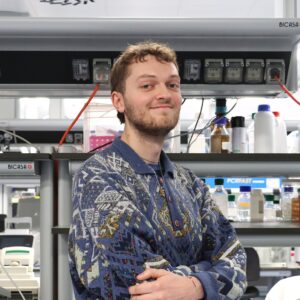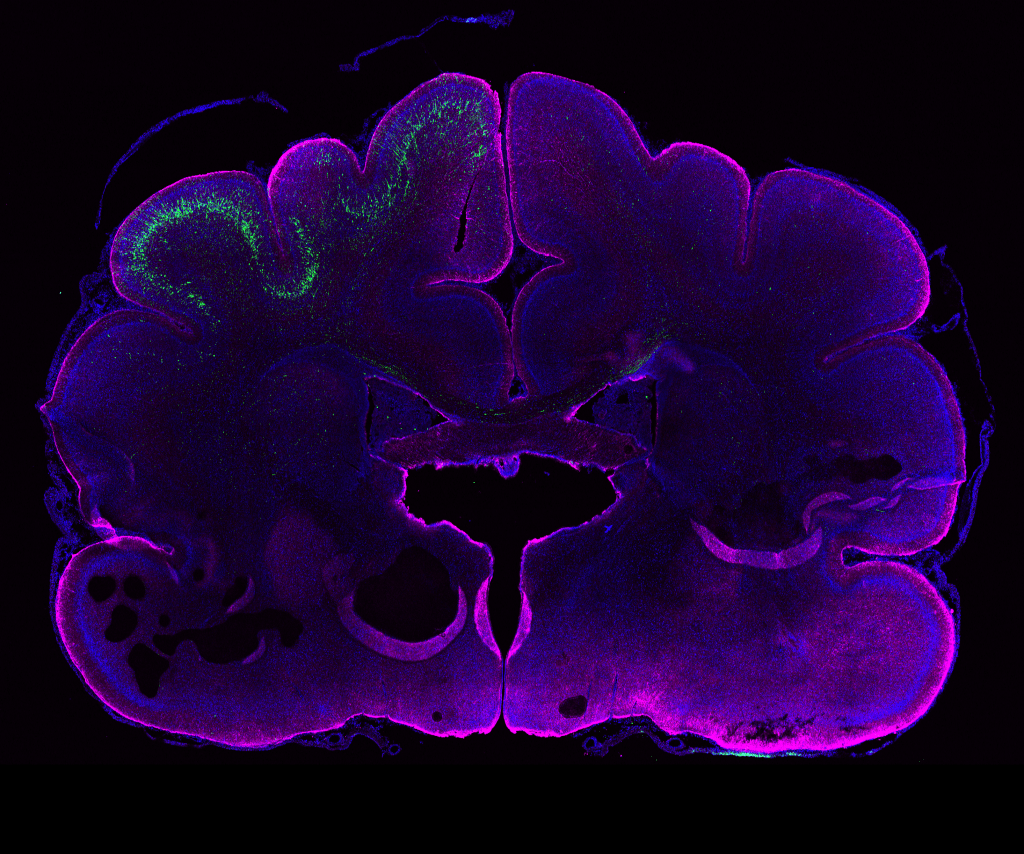
Kalebic Group
The neocortex is the part of brain involved in a variety of higher cognitive functions, including language. During human brain evolution, the neocortex underwent a dramatic expansion, which is considered to be the basis for the unparalleled cognitive abilities of humans. Cognitive impairments often result from altered size or shape of the neocortex, which in turn are caused by defects in the proliferation of neural stem cells in the early stages of brain development. In the adult brain, the same developmental pathways can be hijacked by cancer cells allowing them to proliferate. However, we still understand very little about the mechanisms that are at the basis of those processes.
The research of the Kalebic Group focuses on the molecular and cell biological mechanisms underlying human neocortical development and its implications for neurodevelopmental disorders and brain cancers. In the context of neurodevelopment, we are studying molecular and cellular characteristics of neural stem cells whose impairment results in an alteration of the neocortical size and shape, which can lead to intellectual disabilities, such as Down syndrome. In the context of brain cancers, we are interested in the molecular and cell biology of glioblastoma stem cells to identify new targets associated with the cancer proliferation and invasiveness.
Our Group takes a multidisciplinary approach across biological scales, combining cutting-edge molecular and genetic techniques, CRISPR/Cas9 genome editing, advanced live imaging and computational tools. We apply these techniques to a variety of model systems, including human primary samples, cerebral organoids and animal models.
For informal enquiries please contact [email protected].
PHOTO:
Genetic manipulation in the ferret brain (age: postnatal day 16). Neural stem cells in the left hemisphere were electroporated in vivo 24 days earlier. GFP+ neurons (green) have their cell bodies in the electroporated hemisphere and extend their processes to the contra-lateral hemisphere. Magenta, GFAP (glial cell marker); blue, DAPI (nuclei).
Image from: Kalebic et al., eLife 2018;7:e41241.
Group members
-
 Nereo Kalebic
Nereo Kalebic
Research Group Leader -
 Negin Alizadehmohajer
Negin Alizadehmohajer
Postgraduate Fellow -
 Carlotta Barelli
Carlotta Barelli
PhD Student -
 Ilaria Bertani
Ilaria Bertani
Senior Research Technician -
 Alberto Campione
Alberto Campione
PhD Student -
 Emanuele Capra
Emanuele Capra
PhD Student -
 Nikola Cokorac
Nikola Cokorac
PhD Student -
 Stefania Faletti
Stefania Faletti
Postdoc -
 Mewhanti Flaminia Kaluthantrige Don
Mewhanti Flaminia Kaluthantrige Don
Postdoc -
 Michela Passi
Michela Passi
Postgraduate Fellow -
 Lucas Van Endert
Lucas Van Endert
Postgraduate Fellow
Publications
-
01/2022 - Frontiers in Neuroscience
Roots of the Malformations of Cortical Development in the Cell Biology of Neural Progenitor Cells
The cerebral cortex is a structure that underlies various brain functions, including cognition and language. Mammalian cerebral cortex starts developing during the embryonic period with the neural progenitor cells generating neurons. Newborn neurons migrate along progenitors’ radial processes from the site of their origin in the germinal zones to the cortical plate, where they mature […]
-
09/2021 - Development
Inheritance and flexibility of cell polarity: a clue for understanding human brain development and evolution
Cell polarity is fundamentally important for understanding brain development. Here, we hypothesize that the inheritance and flexibility of cell polarity during neocortex development could be implicated in neocortical evolutionary expansion. Molecular and morphological features of cell polarity may be inherited from one type of progenitor cell to the other and finally transmitted to neurons. Furthermore, […]
-
04/2021 - Frontiers
The Ferret as a Model System for Neocortex Development and Evolution
The neocortex is the largest part of the cerebral cortex and a key structure involved in human behavior and cognition. Comparison of neocortex development across mammals reveals that the proliferative capacity of neural stem and progenitor cells and the length of the neurogenic period are essential for regulating neocortex size and complexity, which in turn […]
-
10/2020 - Neuron
Serotonin Receptor 2A Activation Promotes Evolutionarily Relevant Basal Progenitor Proliferation in the Developing Neocortex.
Evolutionary expansion of the mammalian neocortex (Ncx) has been linked to increased abundance and proliferative capacity of basal progenitors (BPs) in the subventricular zone during development. BP proliferation is governed by both intrinsic and extrinsic signals, several of which have been identified. However, a role of neurotransmitters, a canonical class of extrinsic signaling molecules, in […]
-
08/2020 - Trends in Neuroscience
Basal Progenitor Morphology and Neocortex Evolution
The evolutionary expansion of the neocortex is thought to be largely the consequence of an increase in the proliferative capacity of a specific class of neural progenitors called basal progenitors (BPs). Here we propose that BP morphology is a key cell biological feature underlying the increase in BP proliferative capacity. During neocortical expansion, BPs show […]
